Producers
-
Description:
Coto de Gomariz is named after the village where the winery and most of its vineyards are situated, within a hilly area of Ribeiro, in Galicia. This part of region has always been known as the Golden Mile of Ribeiro, for the exceptional quality of its vineyards, and the word 'Gomariz' means 'branches of vines'. The estate has existed for centuries, and today is owned by the Carreiro family, that has been in Gomariz for generations. Operations and winemaking are led by Inma Pazos, an incredibly dynamic and energetic woman who has worked with the terroir in the region for decades.
At first Gomariz only grew grapes and sold them in bulk, but in the 80’s the family started to bottle wines under their own label, and today Gomariz is one of the most significative wineries in the area. The agriculture used in their 32 hectares is organic, with many plots worked biodynamically. Inma tells us that the “soils of Gomariz and the Valley of the River Avia tell the story of the Geology of Galicia, since we have three of its main soils: the granitic sandy plots are a result of the erosion of millions of years of the granitic bowls. The wines they produce are light, fresh and extraordinarily aromatic; the schist plots come from metamorphic from the Paleozoic period. They are a hard soil, and the plants generally produce less here, and the wines have a more mineral aspect; and finally, the clay parts, from where we get wines with more mouthfeel and structure.”They work with the traditional varieties from the region, Treixadura, Albarino and Godello for whites, and Souzon and Brancellao for the reds.. The winery produces around 10,000 cases from nine wines with 'The Flower and the Bee' making up the bulk of their production. They are unoaked, fermented naturally and bottled without filtration. We love them for their fresh, fruity and mineral profiles.
Image: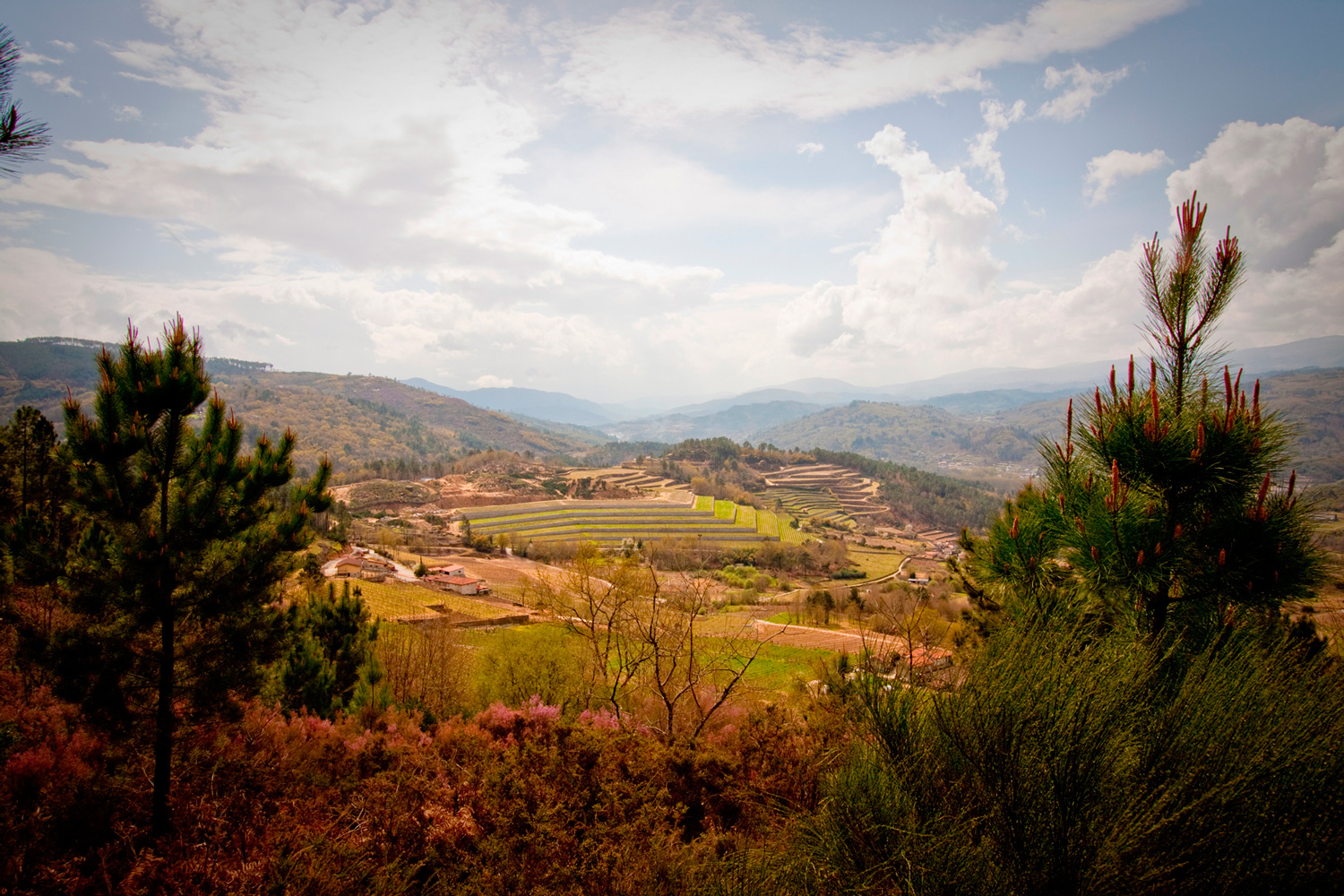 Region:
Region: -
Description:
González Bastías is a town, and a small, family owned winery in western Maule owned and operated by Jose Luís Bastías and Daniela Lorenzo.
Jose’s family planted their 4 hectare vineyard in the early 1800’s and they have been cultivating it ever since. Visiting this vineyard is like travelling back in time: to reach it, you must cross the Maule River by canoe from the local train station between Talca and Constitucion. Jose farms and vinifies biodynamically and without the use of machines; the soil is a mixture of sand and gravel. All the fruit is pressed by hand over bamboo zarandas into open top cement vats; the wines are then aged in either barrels or amphora. All made without manipulation and without the addition of sulfur.
The wines from this unique property are some of the most unique expressions in Chile and are remnants of Chilean ancestry, which is in danger of extinction.
This profile and tasting notes were edited from the Brazos Wine website, along with the pictures used. For more information please visit: Brazos
Image: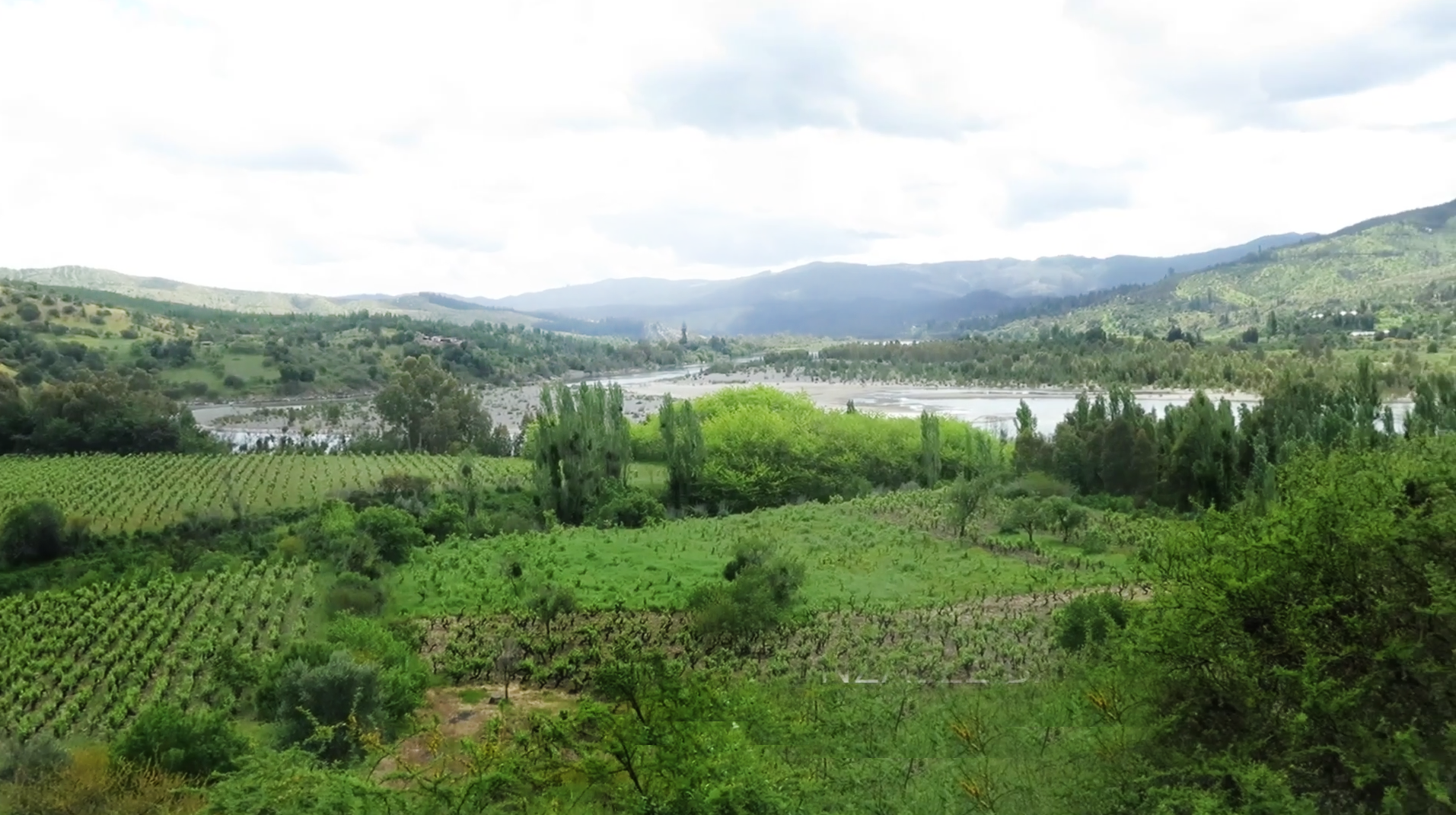 Region:
Region: -
Description:
Greg Harrington spent his career overseeing some of the most prestigious wine programs in the country. After passing the MS exam at 26 years old (the youngest person ever at the time) he started to feel that his future in wine was the production side. In 2004, Greg attended an event featuring the wines of Walla Walla and was blown away by the potential of the area. In the fall of 2005, he and his wife Pam launched Gramercy Cellars.
In 2008, Brandon Moss joined the Gramercy Cellars team and is now a partner and co-winemaker running the day to day operations at the winery.
Gramercy Cellars now makes around 8000 cases/year and works almost exclusively with Rhone and Bordeaux varieties which Greg finds to be most suitable for the terroirs of Walla Walla as well as the greater Columbia Valley Appellation.
The wine-making philosophy is simple: work with top vineyard sites, harvest the fruit when it’s in balance and not overripe, intervene minimally, and use as little new oak as possible.
The resulting wines are restrained, balanced, and complex. They age well but also possess enough fruit to be rewarding when young. Gramercy Cellars was founded in the hope of capturing what first caught Greg’s attention: the distinctive voice of Washington wines, and with each vintage he further proves that it has been a success.
Image: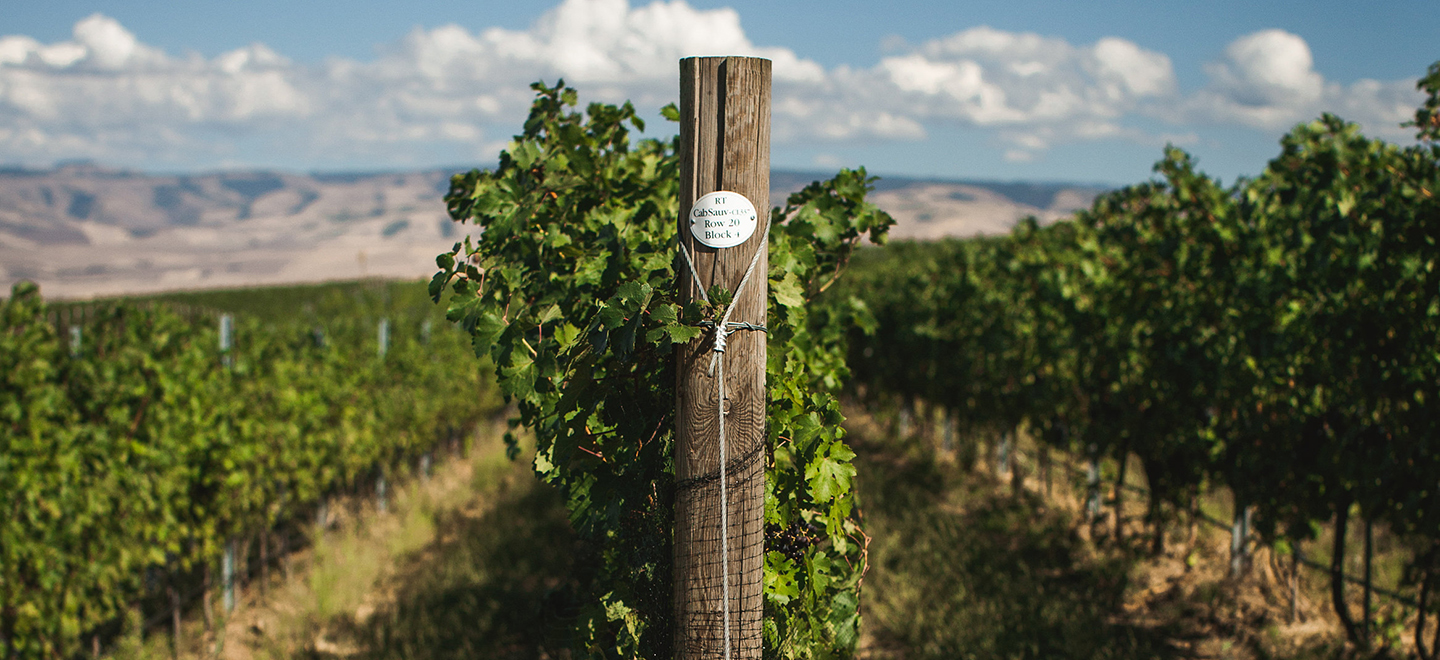 Region:
Region: -
Description:
The Gramona family traces their history as grape growers and winemakers back to 1850 when Josep Batlle managed the vineyard of La Plana for a local family. His son Pau, who was active in the wine cork trade was uniquely positioned to begin selling the wines made from La Plana to sparkling wine producers in France who were at the time suffering from the ravages of phylloxera. By 1881 Pau was in the position to purchase the vineyard of La Plana and to establish Celler Batlle. It was at this time that Pau realized that Xarel.lo, the indigenous grape to this part of Catalunya, was instrumental in his success selling wines to France due to its ability to make well-aged sparkling wines. Pau’s daughter Pilar married Bartolomé Gramona and together they continued to expand their vineyards and sparkling wine business and in 1921 “Gramona Cava Champagne ‘’ first began to appear on their bottles of sparkling wine. By 1945, Pilar and Bartolomé’s sons, Bartomeu & Josep Lluis took over the management of Gramona and began to elaborate the cuvées that the estate is known for.
Today the sons of Bartomeu & Josep Lluis, Xavier & Jaume Gramona manage the operations at Gramona. Each generation has brought something new to the estate with Xavier expanding the scientific understanding of lees aging and the inherent properties of Xarel.lo while Jaume has pursued the conversion of all their vineyards – owned and leased – to organic farming as well as converting the family’s vineyards to biodynamic farming as well.
The wines made at Gramona are sourced from up to 303 hectares of vineyards (35-75) year old vienes) that are farmed at least organically as well as the family’s 72 hectares of vines that are farmed biodynamically. The soils in the Alt Penedès, where Gramona is situated, are primarily clay limestone. Close to the Anoia river they become more alluvial and near the looming Montserrat mountain there are areas of slate. Their top sites: La Plana, Font Jui, Mas Escorpí, and La Solana, are all located close to Celler Batlle where the wines are made and aged. These sites are also distinguished by calcite formations known as têtes de poupées which slowly breakdown in the soils releasing minerals. Whether it is these unique soils, their location and a gentle rise between the Anoia to the north and several natural springs to the south, or the diversity of the massale selections of Xarel.lo and Macabeu found in these sites that makes Gramona’s best sparkling wines so unique could be debated. Combined with the generations of labor and talent the Gramona family has devoted to these vineyards is the bedrock on which their reputation has been established.
At Gramona time is never an issue. The wines receive perhaps the longest average aging than any other sparkling wines in Spain and are never released until they are perfectly mature. Eighty-six percent of the sparkling wines produced in Spain are released after only 9 months while at Gramona theirs are aged a minimum of 30 months, some even 15-17 years.
Long considered a pioneer for their work in the cellar and releasing sparkling wines only after extended aging, Gramona now farms their estate organically and biodynamically with certifications from the Consell Català de la Producció Agraria y Ecològica and DEMETER. They are also taking steps to promote sustainability in their production by reducing their carbon footprint – using geothermic energy and recycling all the water used at the estate.
This profile and tasting notes were edited from the European Cellars website, along with the pictures used. For more information please visit: European Cellars.
Image: Region:
Region: -
Description:
One hundred and thirty years after its founding, the story at Gunderloch, one of the Rheinhessen's most revered estates, is evolving. The changes happening here are cause for real excitement, and all of them are springing from the restless mind of Johannes Hasselbach, the master and commander of the estate since 2016. He is taking Gunderloch in a new direction, and the resulting wines are achieving levels of grace, balance, and natural energy they have never seen before.
Gunderloch is a thriving estate of approximately thirty-one hectares of vines in some of the top vineyards of the "Roter Hang" ("red slope") area in the Rheinhessen appellation. In Nackenheim they own the dominant portion of the grand cru Rothenberg (sixty-five percent of the estate’s holdings) which is planted completely to Riesling. Their GG from here is the flagship of the estate; their noble sweets from the site are legendary. The other part of their production comes from five kilometers down the road in Nierstein, where they work steep parcels of vineyards whose names resound to the ears of German wine lovers: Niersteiner Pettenthal and Niersteiner Hipping, which both provide GG wines for them. The average yield is held to forty-five hectoliters per hectare, among the lowest in Germany, resulting in wines of high extraction and great quality. Minimum ripeness for the various quality levels is significantly above the requirements of the German wine law. The wines are never de-acidified and in high acid vintages bottling is often delayed to allow the wines to harmonize and soften. The cellar work is accomplished with a minimum amount of handling and has traditionally been reductive in style—although that is now changing as Johannes pursues his explorations in winemaking. After much experimentation and rethinking of received wisdoms, Johannes is making signifcant changes at Gunderloch. To wit:
- Less handling of the wines and less “winemaking” overall in favor of hard work in the vineyards. This can be called his guiding philosophy.
- The previously all-reductive cellar is now seeing more barrels, longer maturations, and more skin contact on the wines. This is having a profound impact on the house style.
- Spontaneous fermentations are now the norm; all the estate wines are fermented with native yeasts. Johannes is also doing groundbreaking work starting his fermentations in the vineyards before bringing the wines into the cellar. His experimental wine called VIRGO is entirely fermented by vineyard yeast started outside during harvest.
- The estate has been practicing organic for five years. Johannes started the certification process in 2020. He has also become one of the "young guns" leading the charge for studying and promoting chemical-free viticulture at the VDP.
- The wines at Gunderloch have all been VEGAN since the 2017 vintage.
- The wines are getting drier, more focused, more mineral. Lowering his alcohol levels on the dry wines is a priority for him--and a challenge, given the warming climate and placement of his vineyards. His residual sugars across the board are starting to skew lower as well, which of course reflects the general trend in German winemaking.
In sum, Johannes is actively directing his steps forward at Gunderloch, not passively staying with past practices or assumptions. He feels that with changes to the ecology and culture around him, this is not only a good idea but crucial to the success of his family's estate.
Meanwhile, the Rieslings here, particularly those from the Rothenberg, remain among the finest and most important in the Rheinhessen and in Germany. Taste them and it is obvious why: these are rich, elegant wines full of yellow fruits, great structure and fine acidity for long aging. But it is their newfound balance and the intrinsic energy within them--a direct reflection of their winemaker's youth, vitality and new ideas--that we find so compelling.
BOWLER E-Zine Issue 1 | Q4 2020: Learning and Relearning German Wine
Image: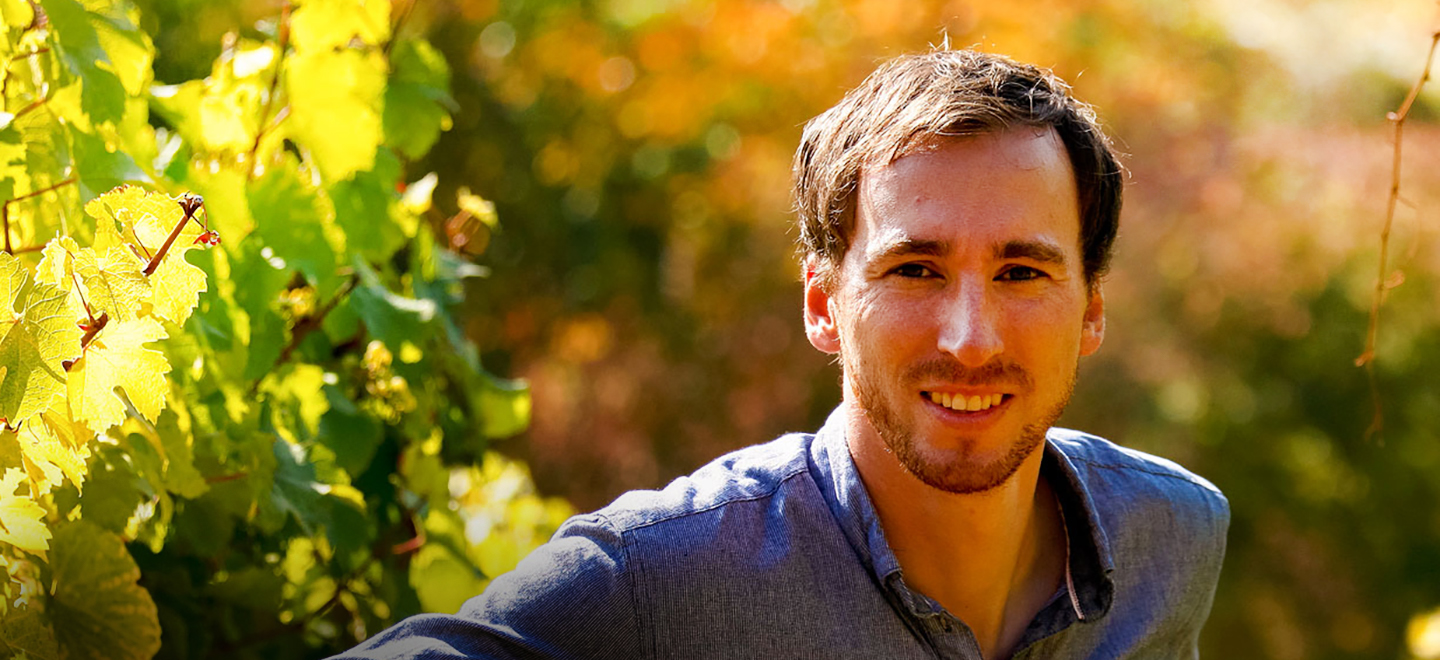 Region:
Region: -
Description:
"We're getting the band back together!" was how I felt asking Stefan Steinmetz to join the Bowler national portfolio this year. From 2005 to 2012, the Steinmetz wines were a key member of the influential and wonderful Mosel Wine Merchants portfolio, which first brought fame and attention to shining lights like Clemens Busch, Immich-Batterieberg, Matthias Knebel, Peter Lauer and others. I've followed and enjoyed drinking the Steinmetz wines since then, but never thought I would have the honor of representing them at Bowler. Fortunately, life is long and luck favors the prepared, so here we are.
Weingut Günther Steinmetz consists of 13ha of vines spread over a rather broad area of 20km in the heart of the Middle Mosel. The historic estate, centered in Brauneberg, is 120+ years old; Stefan's grandfather was one of the first in the village to bottle wines under his own name. The vineyards on the elegant, blue-white-and gold labels read like a who's who of legendary Mosel sites: Brauneberger Juffer, Piesporter Goldtröpfchen, Wehlener Sonnenuhr, Dhroner Hofberg, Mülheimer Sonnenlay, and Kestener Paulinshofberg, all ranked as VDP Grosse Lagen (Grand Cru's). Perhaps the most exciting and defining of Stefan's holdings are his sites in Wintrich, the Wintricher Gaierslay and Ohligsberg, two steep, south-facing, cool and breezy side-valleys of purple-hued slate and quartzite in which he holds commanding positions. There is a sense of breathing sacred air as one strolls through these quiet, half-hidden vineyards.
Stefan took over the winery when he was just 17 years old due to the sudden passing of his father in 1998. Not hoped for and not easy, it took a heroic level of determination to assume the mantle at such an important estate. His success and expansion of it in subsequent years has been remarkable. Today, his wines are considered a benchmark for the area, lauded by collectors and required reading in every major vintage report.
Farming and winemaking here are strictly conscientious. Grapes are harvested in low quantities, entirely by hand. As Stefan puts it: "The external economy is oriented towards natural viticulture, which includes the most environmentally friendly viticulture possible by not using fertilizers or herbicides and insecticides. In the cellar management, we renounce any addition of treatment agents such as yeasts and fining agents, as well as acid additives or deacidification limes. Also, no animal proteins are used. All wines, without exception, are fermented spontaneously in large wood or steel. The aim of my efforts is to create wines that are a "fingerprint" of everything that makes up the character of a great vineyard."
Stefan makes a full range of Rieslings from dry to sweet, all connected by throughlines of grace, harmony, and crystal-clear mineral expression. Those who like tension in their wines will not be disappointed. Also notable are his Pinots which come from a mix of German and French clones grown on slate. He vinifies these exclusively in neutral oak with varied levels of stem inclusion and maceration, depending on the site and vintage. He also experiments with other red grapes, including a particularly compelling Syrah. There are even a few Romanée-Conti barrels in the basement (don't ask, don't tell).
How can I express in a few sentences the special nature of this small but crucial family estate, its soul-gladdening wines and its kind-hearted, dedicated owners, Stefan and Sammie Steinmetz? I cannot. The wines will have to do that for me. I look forward to sharing them with everyone and helping this estate achieve even greater status and appreciation than it has already earned.
Image: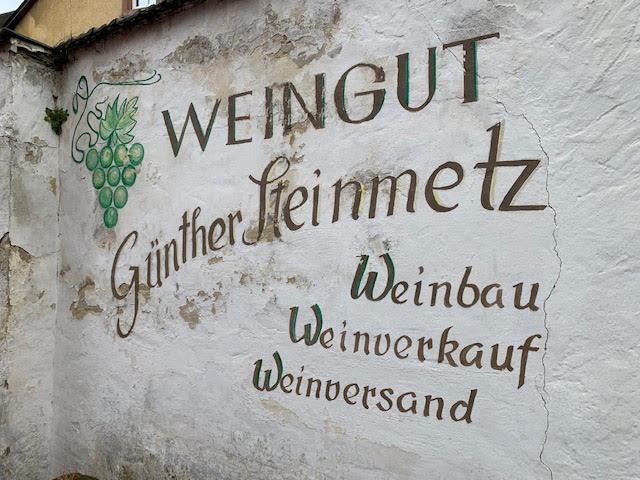 Region:
Region: -
Description:
Halarà (Χαλάρα) is Greek for "take it easy."
Stefano Amerighi
Francesco de Franco ('A Vita)
Nino Barraco (Barraco)
Corrado Dottori (La Distesa)
Giovanni Scarfone (Bonavita)
Francesco Ferreri (Tanca Nica)Six close friends, a who's who in the Italian natural (but territory-driven and clean) wine world. Their families have been vacationing together for years. Then they had the opportunity to buy a vineyard together, one that was going to be ripped out, the planting rights of which would probably have been sold to someone for a new vineyard in northern Italy. So they saved this vineyard, in Contrada Abbadessa in Marsala, which is planted ad alberello to roughly 80% Parpato and 20% Catarratto, 40-year-old vines. Parpato, also called Quattro Rappe, is one of those forgotten grapes...it was thought to be a local biotype of Grenache but it seems now is more similar to Carignan. Anyway, it's adapted to this territory over the centuries and behaves like itself.
The project is about this vineyard, a celebration of Mediterranean-ness. Marsala is essentially the dead-center point of the Mediterranean. Halarà is also about a spirit of collaboration between six winemakers with their own estates to run, spread between Sicily, Pantelleria, Calabria, Tuscany, and Le Marche.
Though the vineyard is in Marsala (the place), they are not making Marsala (the wine). For now, three wines...a rosato, a rosso, and, eventually-con calma-halarà, a bianco. Fresh, energetic, and belying the hot, arid climate of Western Sicily.
2019 was their first vintage.
"What is the Mediterranean? A thousand things together. Not a landscape, but innumerable landscapes. Not a sea, but a succession of seas. Not a civilization, but a series of cilivizations stacked upon one another." -Fernand Braudel
Image: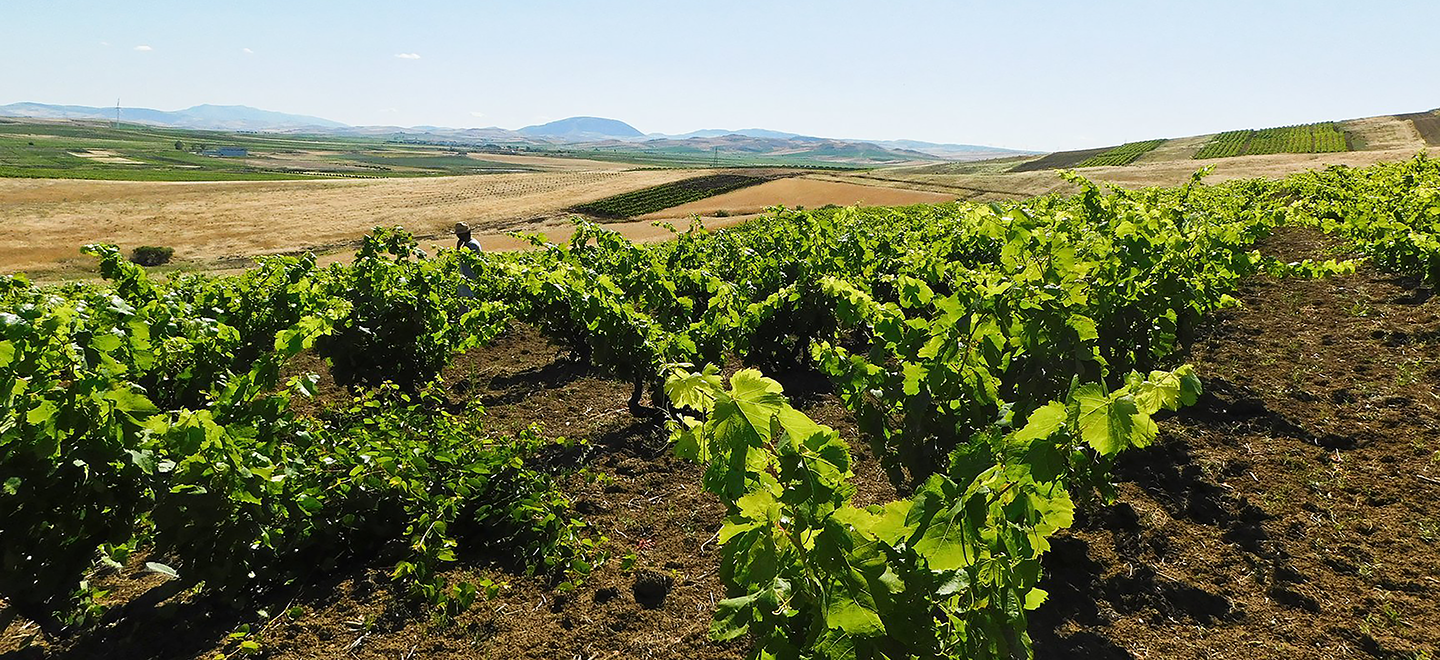 Region:
Region: -
Description:
Hamacher Wines is a classic example of how we choose wineries to work with at Bowler: Samples are sent to the office, the bottles are popped in the afternoon, and a few of us taste and discuss. Everyone agrees that the wines are very good, and a great fit for our portfolio, but we have too many producers in our book, and the reps are already overwhelmed by the number of wines to sell. So, we make the difficult decision to pass. That evening, David Bowler brings the samples home, and in the middle of a glass of one of the wines (Bieze Vineyard in Hamacher's case), he has an epiphany and emails the winemaker letting them know we changed our minds and want to work together. Great wine is hard to pass up, especially in DB's case.
Eric Hamacher got the wine bug in the 80s while studying biochemistry and food science at U.C. Davis. His wine journey that followed led him to California working for Mondavi, Chalone, and Etude, but the cool climate and unchartered territory of Oregon eventually stole his heart. In 1995, he moved up to the Willamette Valley and started Hamacher Wines. In 2002, after having bounced around winemaking facilities for seven years, Eric founded the Carlton Winemakers Studio where he would make his wines for the next decade. Finally, in 2014 he moved his operation into the old Ponzi facility thanks to a connection he had made – his wife Luisa Ponzi.
Eric’s winemaking is old-world in style without ignoring the fact that he is making wine in the new world. Seeking elegance and texture, he harvests on the earlier side, ferments with natural yeasts at cool temperatures, and ages the wines in mostly neutral barrels. His production has been around 2000 cases per year and has been that way since he started the winery. Eric’s wines are deliciously classic Oregon, and showcase the terroir of the Willamette Valley beautifully.Image: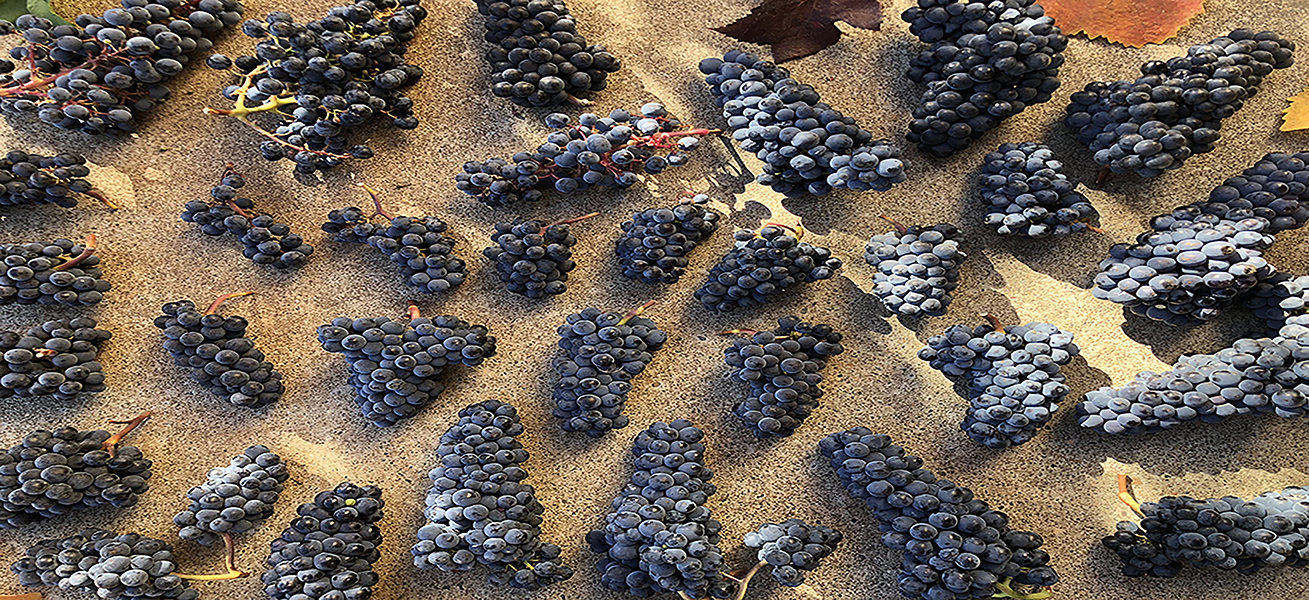 Region:
Region: -
Description:
For more information on Herve Villemade, please visit Selection Massale.
Available in California.
Image: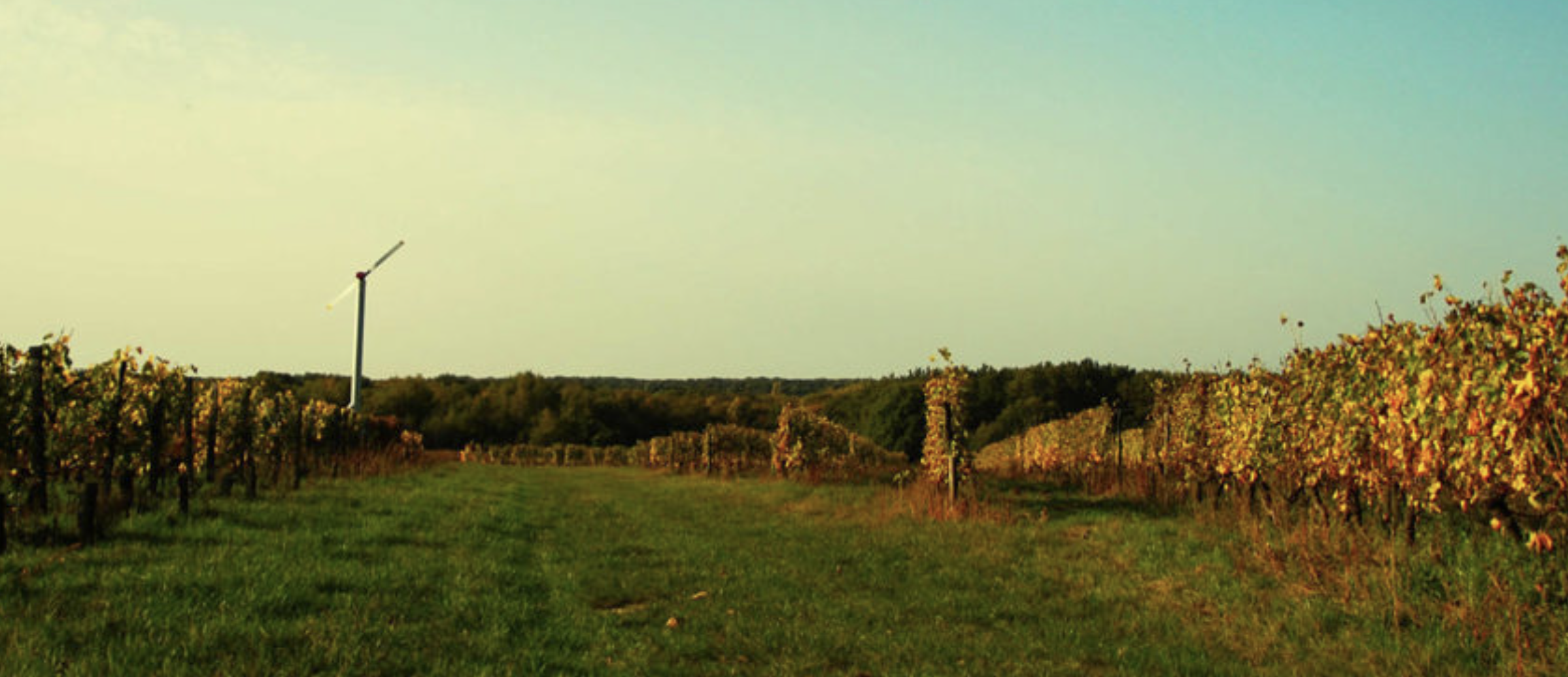 Region:
Region: -
Description:
Christoph Hoch is the twelth generation, since 1640, to make wine in his town of Hollenburg, on the south side of the Danube. Historically, vines were planted on this side of the Danube and the north side was for food crops. In 2013, Hoch split from his parents winery, starting with five hectares that would have been his inheritence eventually. Today Hoch has 12 hectares total, all in Hollenburg, and all farmed biodynamically and certified by Demeter. The subsoil is Hollenburger conglomerate, which was formed by the Traisental and Danube rivers crashing together and compacting the chalk with the river stones. The chalk is equally as active as the Côte des Blancs in Champagne, bringing minerals to the vines. This similarity in soil inspired Christoph to make sparkling wine, although, the source of chalk is completely different. In Hollenburg it's from the Alps and in Champagne it's maritime chalk, or what is called muschelkalk in German.
Christoph has mostly Grüner Veltliner planted, along with Riesling, Zweigelt, Weissburgunder, Blauer Portugesier, and Muskat Ottonel. Hoch's still wines are always a blend of three vintages and the pet-nats are two vintages. Generally, for the still wines, the most recent vintage is 30% of the blend, 50% is from two vintages ago, and 20% is three years old. This gives a completely different perspective on terroir. Naturally, wines from some areas are more structured or tannic and they benefit the blend by having time to mellow a bit. The youngest wine is normally the fruitiest and approachable. It's a completely unique way of highlighting the Hollenburger conglomerate soil over vintage. The Hoch wines are very original and are some of the best representations of the ‘new’ wines of Austria.BOWLER E-Zine Issue 1 | Q4 2020: Austria - Two Newbies from Hoch
BOWLER E-Zine Issue 4 | January 2022: Compost Cookery with Foradori, Hoch, Bucklin, and Podere Giardino
Image: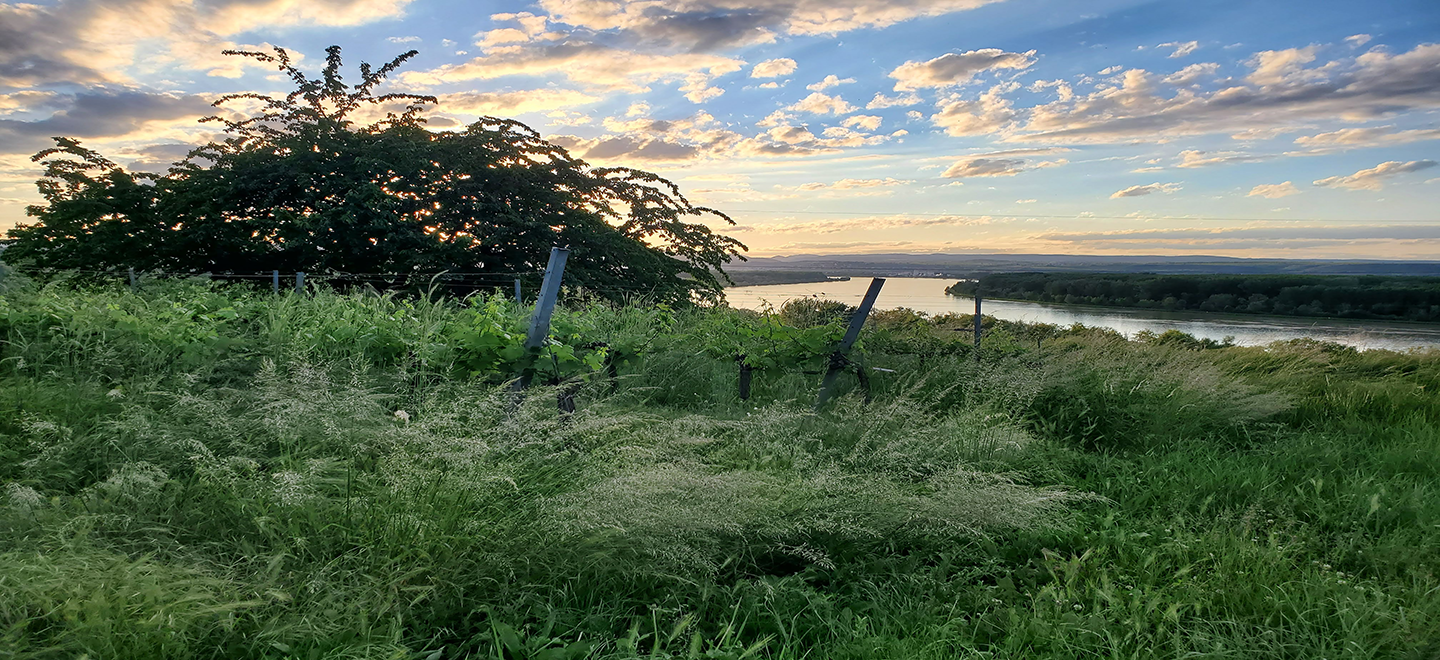 Region:
Region:
